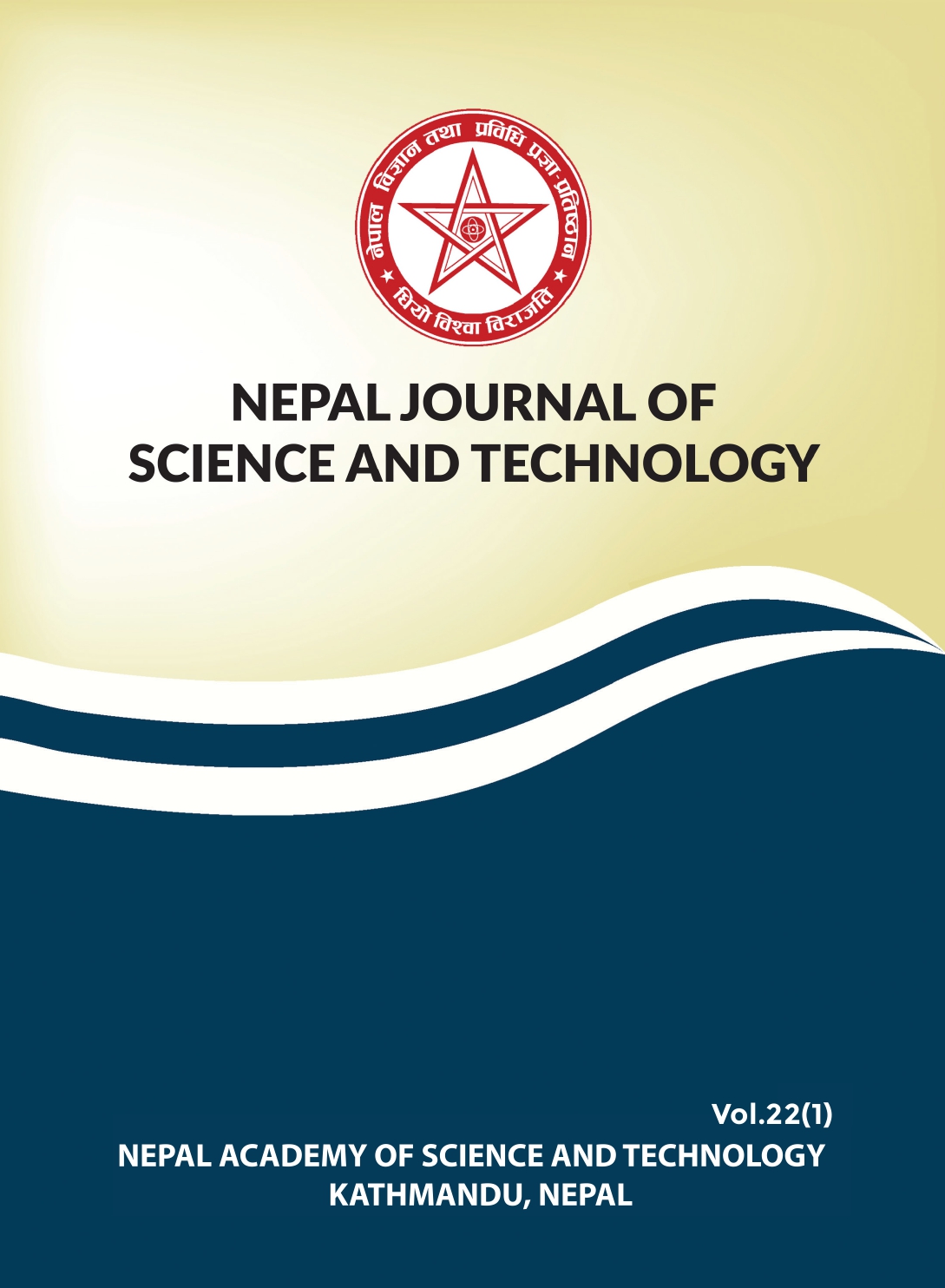Assessing the Climate Change Vulnerability of the Communities Residing in Doda River Basin, Far-Western Nepal
DOI:
https://doi.org/10.3126/njst.v22i1.67170Keywords:
Climate change, Trend analysis, Vulnerability, Adaptation StrategiesAbstract
The study evaluates the vulnerability and climate change (CC) impacts on livelihood-related services aiming to identify strategies for enhancing resilience and adaptation. Key aspects of the study include the analysis of hydro-meteorological data, examination of climatic variability evidence, and vulnerability assessments related to CC. Vulnerability to CC varies based on exposure, sensitivity, and adaptation capacity, especially within a small spatial scale. Employing a bottom-up approach, the study applied trend analysis, Mann-Kendall statistical trend, IPCC vulnerability equation, and the Capacity Building and Vulnerability Assessment (CBCA) framework as fundamental methodologies. Meteorological and household data validate climatic trends and vulnerability. Significant changes in climatic parameters are observed, mirroring previous studies. Local communities experience decreased rainfall frequency, frequent floods, extended dry seasons, delayed monsoons, and intense late summer rainfall, verified by data from the nearest meteorological station. The exposure index ranges from 2.35 to 3.87, with wards 1 and 6 of Laljhadi Rural Municipality (RM) having the least exposure while ward 3 the highest, according to respondent perceptions. Sensitivity is highest in wards near the Doda River, with ward 4 having the highest sensitivity index. Adaptive capacity indices range from 2.01 to 3.68, with the least in wards 1 and 6. The highest vulnerability is observed in wards 3, 4, and 2 with vulnerability scores of 16.8, 13.6, and 11.1, respectively. Overall, the vulnerability calibration index indicated low adaptive capacity across all wards, emphasizing the need to enhance adaptive capabilities as a key recommendation for reducing CC vulnerability.
Downloads
Downloads
Published
How to Cite
Issue
Section
License
Copyright (c) 2023 The Author(s)

This work is licensed under a Creative Commons Attribution-NonCommercial 4.0 International License.
Authors retain copyright and grant the journal right of first publication.




